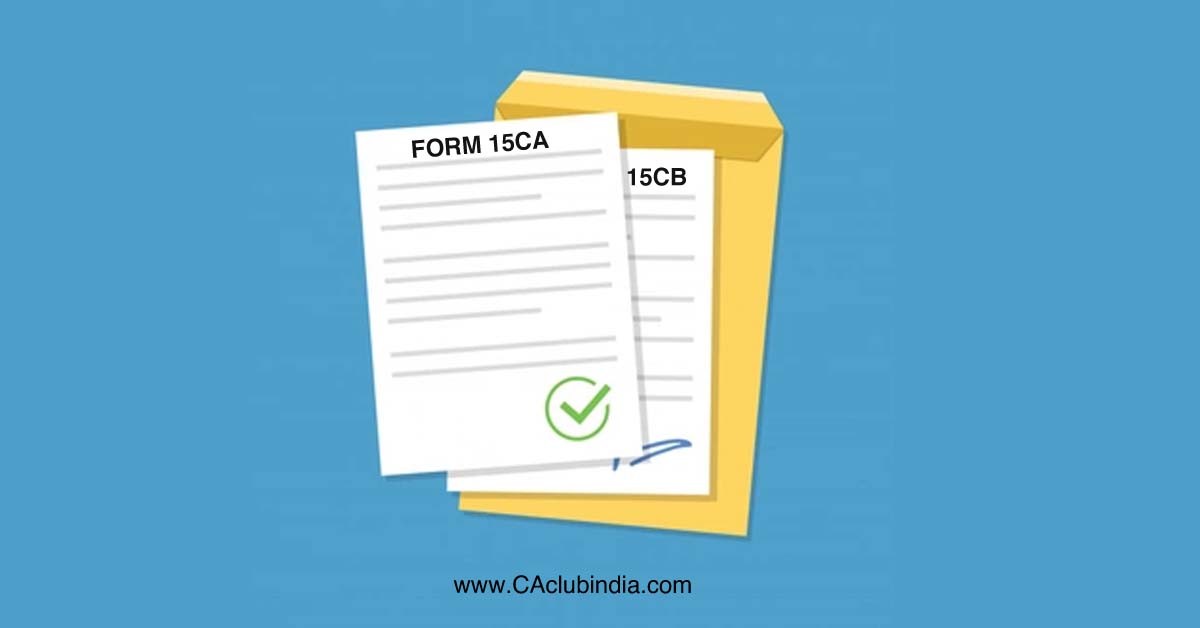Introduction
In today's globalized world, cross-border transactions have become commonplace. The transfer of money from one country to another, especially when involving Non-Resident Indians (NRIs), requires adherence to specific regulations. India has a process in place to monitor and regulate these transactions, which involves two important forms: Form 15CA and Form 15CB. These forms help ensure that remittances are properly documented and comply with tax laws. This article aims to provide a comprehensive overview of Form 15CA and 15CB, shedding light on their significance and usage in the remittance process for NRIs.

Form 15CA
This is a declaration of remittance that must be filled out by the person making the payment to a non-resident individual or entity. It's a way to report foreign remittances to the Indian tax authorities, specifically the Income Tax Department. The form is submitted electronically through the Income Tax Department’s online portal. It captures information about the nature and purpose of the remittance, along with relevant tax details. This helps ensure that the appropriate taxes are deducted and that the remittance complies with tax regulations for NRIs. The form asks for details such as the remitter and recipient information, nature of remittance, purpose of remittance, taxability under relevant tax treaties, and the amount of remittance.
Form 15CB
Form 15CB, also known as the Certificate of an Accountant, is a document issued by a Chartered Accountant (CA) certifying the applicable provisions of the Income Tax Act and tax treaties concerning remittance. It verifies that the remittance complies with Indian tax laws and helps determine the appropriate rate of tax deduction, if any. Before filing Form 15CA, the remitter must obtain a certificate in Form 15CB from a CA. The CA assesses the nature of the remittance, ensures proper documentation, and certifies the taxability of the remittance as per relevant provisions. The Form 15CB acts as a prerequisite for completing Form 15CA and serves as evidence of tax compliance.
Significance and Procedure
The introduction of Form 15CA and 15CB has brought significant transparency and accountability to remittance processes involving NRIs. These forms help the Indian tax authorities monitor and regulate cross-border financial transactions effectively. The utilization of these forms ensures that remittances are appropriately assessed for taxation, preventing any potential tax evasion or misuse of funds.
The procedure for filing Form 15CA and 15CB involves the following steps
1. Obtain a CA Certificate (Form 15CB): The remitter must engage a qualified CA to assess the nature of the remittance and issue Form 15CB certifying compliance with tax regulations.
2. File Form 15CA: Using the online portal of the Income Tax Department, the remitter must electronically file Form 15CA. The form requires the remitter to provide detailed information about the remittance, including CA certification details.
3. Verification and Submission: Once filed, the remitter must verify the details provided in Form 15CA and submit the form electronically. Upon successful verification and submission, the system generates an acknowledgment number for future reference.
4. Retain Documentation: It is crucial to retain copies of Form 15CA, Form 15CB, and the acknowledgment number for record-keeping and future requirements.
Conclusion
Form 15CA and 15CB play a vital role in facilitating the remittance of money to NRIs while ensuring compliance with Indian tax laws. These forms have streamlined the process of monitoring cross-border transactions and help prevent tax evasion or misuse of funds. NRIs and remitters must familiarize themselves with the requirements of Form 15CA and 15CB and ensure proper compliance. Seeking guidance from tax professionals, such as Chartered Accountants, is highly recommended to navigate the complexities of these forms and ensure adherence to legal and regulatory obligations. With the continued enforcement of these forms, India aims to strengthen its financial systems and promote transparency in remittance transactions involving NRIs.
The author is a Chartered Accountant and former EY employee, serves as the Chief Consultant of the NRI Desk and Influencer Desk at AKT Associates. He specializes in offering consultancy services tailored for NRIs and is dedicated to creating educational content to raise awareness within the NRI community.








 CAclubindia
CAclubindia
